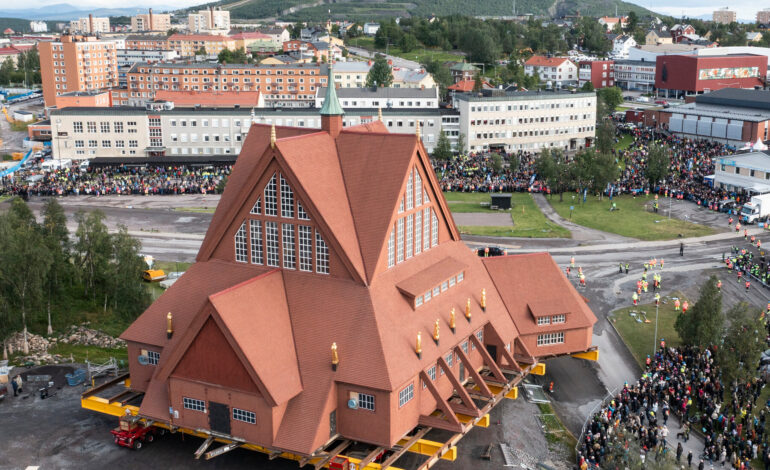Historic Kiruna Church Relocates to Preserve Heritage and Safety

The historic Kiruna Kyrka, a striking wooden church known for its distinctive red hue, has begun its journey to a new location in Kiruna, Sweden. This relocation, initiated on March 5, 2024, follows a blessing from local Lutheran leaders and aims to protect the 113-year-old structure from unstable ground caused by nearby iron mining operations.
Kiruna, situated in Sweden’s northernmost region, has faced significant challenges due to the expansion of the world’s largest underground iron ore mine, operated by the state-owned company LKAB. Since 2004, approximately two dozen buildings have been relocated as part of efforts to safeguard the city’s historical center, which is at risk due to the mining activities beneath it.
The relocation of Kiruna Kyrka, a beloved cultural landmark, presents unique logistical challenges. Constructed in 1912, the church was commissioned by LKAB’s director and has since become a vital spiritual space for the local community. Its separate belfry and stunning architecture attract numerous visitors, making its preservation a priority for both residents and heritage conservationists.
Over the course of two days, the church will be carefully transported approximately three miles to its new site. The operation has drawn significant attention from the local community, with many residents expressing curiosity and support for the ambitious project. Local officials have noted the importance of this effort in maintaining Kiruna’s cultural identity amidst ongoing changes to the landscape.
As the city adapts to the implications of mining, the relocation of Kiruna Kyrka stands as a testament to the community’s commitment to preserving its heritage while ensuring safety. The church’s move is not only a logistical feat but also a symbol of resilience for the people of Kiruna, who are navigating the complexities of modern mining operations alongside their rich history.
The church’s journey marks a significant moment in Kiruna’s ongoing transformation, as it continues to balance industrial growth with the preservation of its cultural landmarks. As the church arrives at its new home, it will undoubtedly remain a focal point for both locals and visitors, preserving the spiritual and historical essence that has defined Kiruna for over a century.






